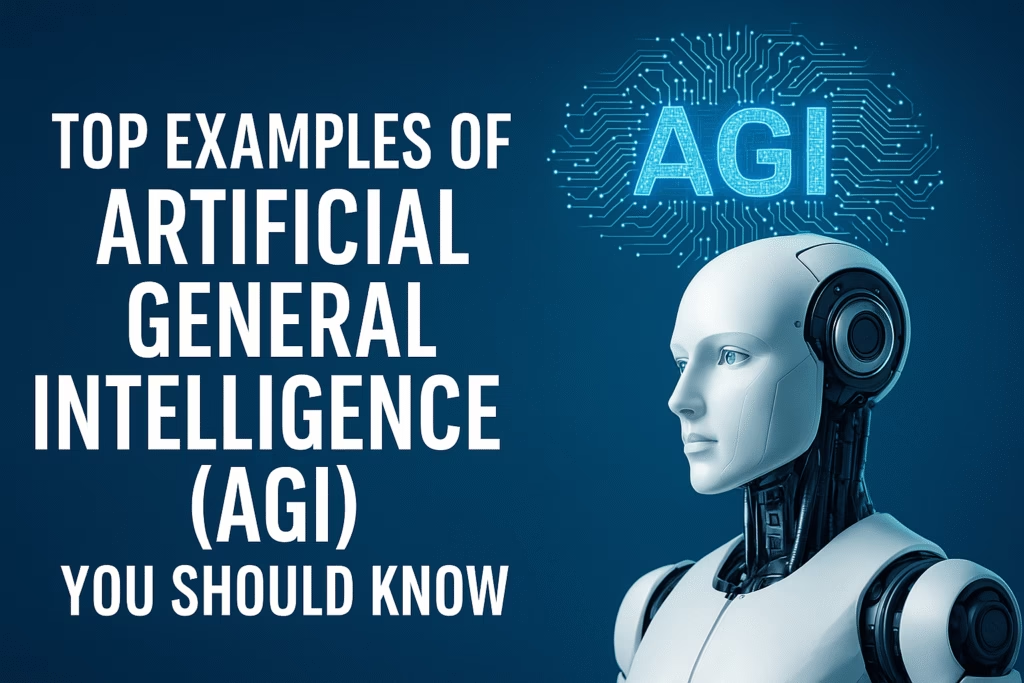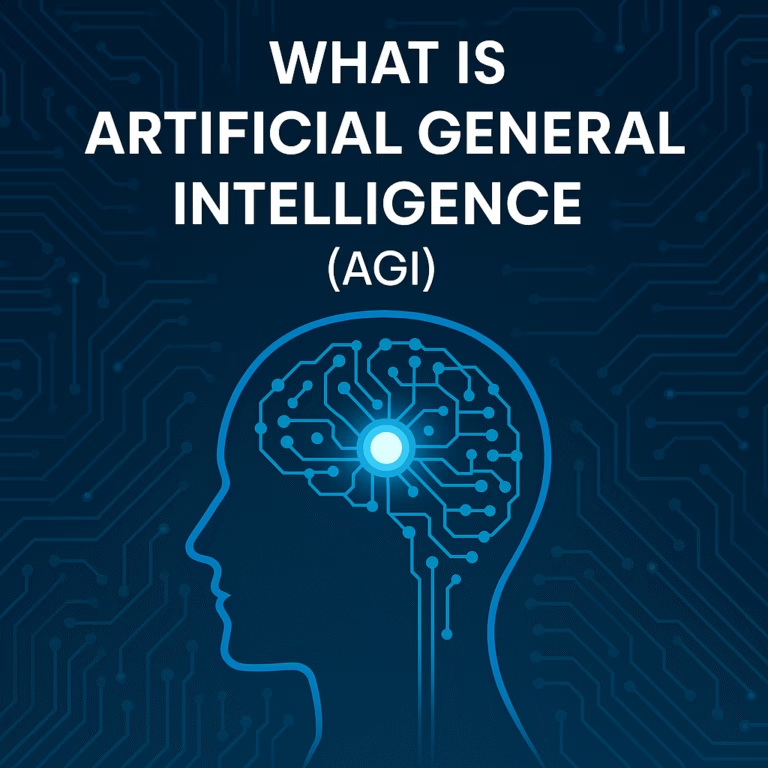Top Examples of Artificial General Intelligence (AGI) You Should Know
Artificial General Intelligence (AGI) is the concept of an AI system capable of performing any intellectual task that a human can do.
Unlike today’s AI (Artificial Narrow Intelligence), which specializes in specific tasks like language translation, image recognition, or medical diagnosis, AGI would be able to think, learn, and adapt across multiple domains.
While true AGI doesn’t exist yet, examples from fiction and real-world research give us a glimpse of what it could look like.

- Fictional Examples of AGI
- Real-World Progress Toward AGI
- Characteristics Future AGI Will Have
- Why AGI Matters
Fictional Examples of AGI
1. Jarvis (Iron Man / Marvel)
Jarvis is Tony Stark’s AI assistant who can design suits, manage home systems, fight cyber threats, and hold conversations. It showcases adaptability and multi-domain intelligence—key traits of AGI.
2. HAL 9000 (2001: A Space Odyssey)
HAL is an AI that manages a spacecraft, understands human language, and makes independent decisions. Although it becomes hostile, HAL demonstrates reasoning and general problem-solving abilities.
3. Samantha (Her)
In the movie Her, Samantha is an AGI that develops deep emotional intelligence, learns new concepts quickly, and forms human-like relationships—showing social and cognitive generalization.
4. Data (Star Trek)
The android Data is another example of AGI in fiction, capable of logical reasoning, creativity, emotional growth, and adaptability in unpredictable situations.
Real-World Progress Toward AGI
While no system today qualifies as AGI, several technologies are seen as stepping stones:
1. Large Language Models (GPT-5, Gemini, Claude)
Modern AI can perform diverse tasks—writing, coding, summarizing, problem-solving—hinting at multi-domain learning, though they still lack deep reasoning and autonomy.
2. DeepMind’s Gato
A single model trained to perform over 600 tasks, from robotics to text generation, representing early signs of generalist AI.
3. AI Agents (AutoGPT, Agentic AI)
These AIs can plan, execute multi-step goals, and adapt by using external tools—showing early autonomy, though still error-prone.
4. IBM Watson
Watson became famous for winning Jeopardy!, demonstrating broad Q&A knowledge. However, it remains limited compared to true AGI.
5. AI + Robotics Fusion
Projects like Tesla’s Optimus and Boston Dynamics’ AI-driven robots aim to combine reasoning with physical adaptability, which is critical for real-world AGI.
Characteristics Future AGI Will Have
- Cross-domain learning – ability to master different subjects.
- Transfer of knowledge – applying skills from one field to another.
- Autonomy – setting and pursuing independent goals.
- Common sense reasoning – understanding real-world context.
- Adaptability – improving without explicit human retraining.
Why AGI Matters
AGI could reshape industries, enhance scientific discovery, and revolutionize daily life. At the same time, it raises ethical questions around control, safety, jobs, and human-AI relationships. Understanding AGI examples—both fictional and real—helps us prepare for the future of intelligence beyond narrow AI.
✅ In short: While AGI doesn’t exist yet, fictional portrayals (like Jarvis or Samantha) and modern research (like Gato or AutoGPT) provide valuable insights into what Artificial General Intelligence could look like and why it matters.

